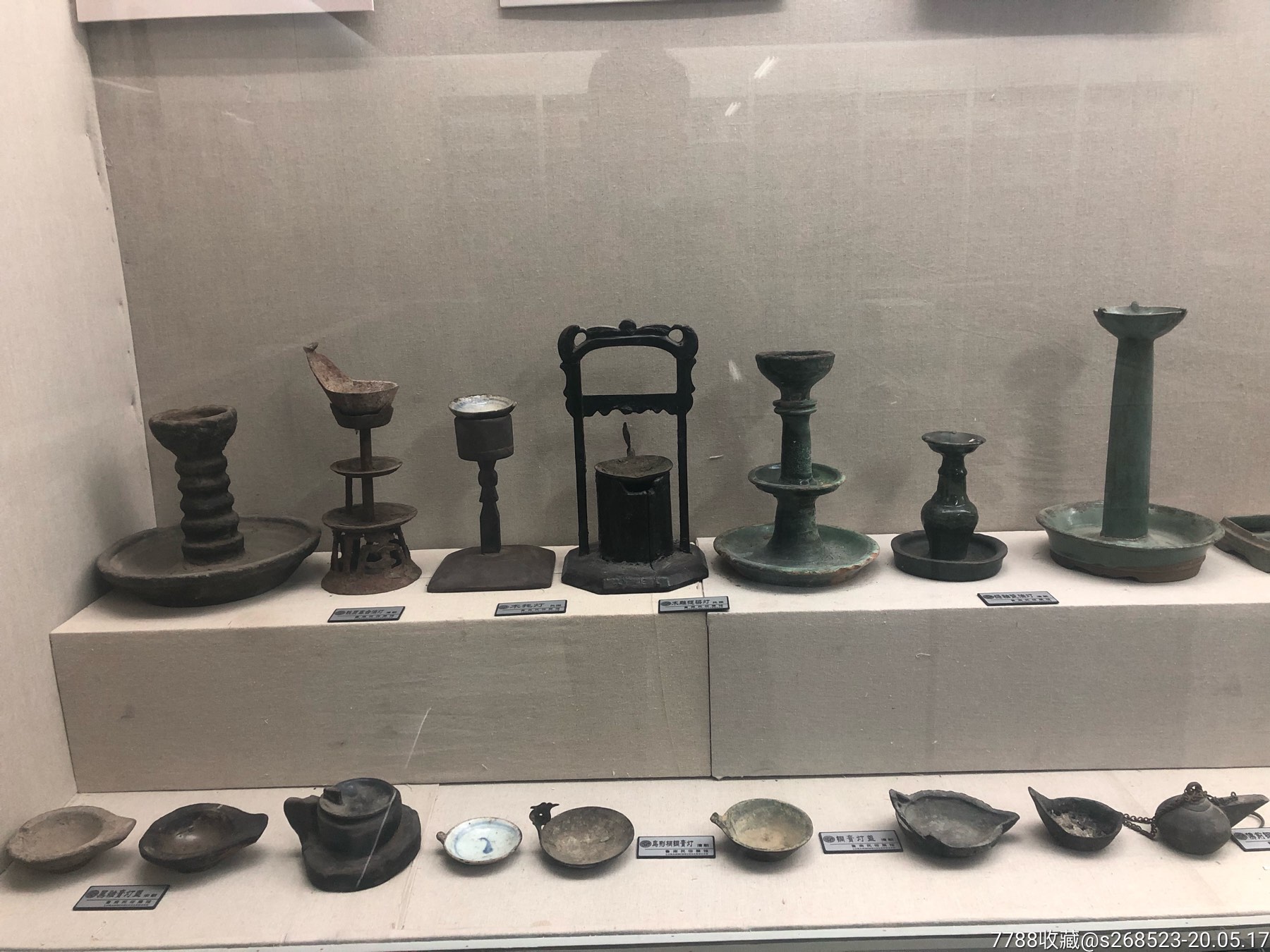Learn about the history of lighting across thousands of years

Where there is human civilization, there is light. Since humans learned to drill wood for fire, lighting has gone through a development process from fire, oil to electricity. Lighting tools have undergone countless changes, from torches, animal oil, candles, kerosene lamps to incandescent lamps, fluorescent lamps, and now to a dazzling array of decorative and energy-saving lamps. It can be said that the history of lighting development is a witness to the history of human development.

The first generation of illumination - the sun
Human beings were first based on the sun to formulate the rest, the so-called "sunrise work, sunset and rest." Sunlight not only brings light, but also affects the rhythm of human life to a certain extent.
Sunlight is a kind of electromagnetic wave, in addition to the colorful visible spectrum (energy uniform color spectrum mixed together into white light), as well as invisible ultraviolet, infrared. As a lighting tool, the energy of the sun can be described as inexhaustible, but at night, the sun's brightness comes down.
Intelligent human beings are not willing to endure the limitations of nature. Soon, various artificial light sources boarded the historical stage of lighting.

The second generation lighting tool - firelight
For most of history, man has used fire to extinguish the terrible darkness of the night. In the dry grassland, after a flash of lightning and thunder, nature sent man tinder. From the acquisition of natural fire to the invention of drilling wood for fire, the history of human lighting has also begun.
In order to defend against wild animals and drive out the darkness, because the "heat radiation light source" in the form of bonfires and fire is not easy to move, humans gradually tried to bundle pine resin or fat things coated on bark or wood chips, and tied them together to make the initial torch.

The third generation lighting tool - oil lamp
After meeting the basic needs of survival, people hope to apply fire to life, so people will be able to burn grease into a container, add a wick to light, which is the originator of oil lamps. The use of oil lamps has extended human working hours by 2-3 hours, which is the first revolution in the history of human lighting.
Humans have a long history of using oil lamps for lighting. During this period, the oil lamp has been improved several times. The oil used in the lamp was changed from animal oil to vegetable oil and finally replaced by kerosene. The wick also experienced the change process of grass, cotton thread and multi-strand cotton thread. Oil lamps were covered to prevent the wind from blowing out the fire. Early covers were made of paper, which was unsafe, and later glass covers were used. Such oil lamps are not afraid of wind, and they are also used outdoors, and they burn fully without black smoke.

Fourth generation lighting tool - gas lamp
More than 100 years ago, the British invented the gas lamp, which made the human lighting method a big step forward. Initially, this kind of lamp is very unsafe and dangerous to use indoors, so it is mainly used in foreign shops and streets.

Later, after improvement, inns, shopfronts, teahouses, theater and homes compete to use. This provides the necessary conditions for the night market to flourish. In the 1870s, Shanghai people commented on the ten sights of the North of Shanghai and the concession, one of which was the "night market burning lamp".
The fifth generation lighting tool - electric lamp
At the end of the 19th century, Edison invented the electric light. On October 22, 1879, Edison lit the first truly widely used electric lamp. Since then, it has rewritten the history of human lighting, and human beings have moved toward the era of electric lighting.

- electric light bulb (incandescent lamp) : the current in the wire enters the very thin wire, the wire will produce high heat, heat to a certain extent will emit light, this is the earliest electric lamp, and it is still widely used.

- Fluorescent lamp: it does not contain infrared, so its light is very mild, does not hurt the eyes; Because it does not contain hot lines, it is more power-saving to use; It also gives off a lot of beautiful colored light. This is determined by the nature of the chemicals contained in the phosphor, such as magnesium tungstate coated with blue-white light, cadmium borate coated with reddish light.

- Steam lamp: It is made of a variety of steam sealed in a glass tube to pass an electric current and glow. They're built, kind of like fluorescent lamps, and they save electricity. There are mercury vapor lamps and sodium vapor lamps.

The sixth generation of lighting tools - LED lights
The new generation of lighting source, LED lamp, is a kind of solid state semiconductor device that can convert electrical energy into visible light, that is, high-brightness light-emitting diode lighting, it can directly convert electricity into light, it has a series of advantages such as high efficiency, energy saving, long life, environmental protection and so on.
The development of LED from 1907, Henry Joseph Round for the first time in a piece of silicon carbide observed electroluminescence phenomenon, after 1969 the first red LED lamp appeared; 1976 The first green LED light appeared; The first blue LED light appeared in 1993, the first white LED light appeared in 1999, and finally scientists developed lamps close to natural light in the field of LED, and began to be used for indoor lighting.

LED lights began to be popular in the market in 2010, and then occupied 16% of the world lighting market. This is an indispensable green technology lighting revolution for mankind, and it is also another great revolution in the history of human lighting since the incandescent lamp.
Lamps in China
Chinese lamps are famous for their practicality, epochs and novelty. In China, lamps are mainly divided into several kinds: ceramic lamps, bronze lamps and jade lamps.

Lamps in the Qin Dynasty
Qin Dynasty, lamps casting luxury beautiful, from our primary school, junior high school, high school textbooks inside the Epang Palace, imperial tombs and a series of ancient buildings can experience the luxury of lamps. There are also some cultural relics unearthed in the Qin Dynasty, and the various lamps displayed in the museum are the most authentic examples.

Lamps in the Han Dynasty
This is a very important period in the history of lighting development, but also a turning point in the history of lighting development. The main reason comes from innovation and development. During the Han Dynasty, bronze lamps continued to prevail, and ceramic lamps became the mainstream of the lighting market with a new attitude, not only that, but also iron lamps and stone lamps appeared on the market.
From the modeling point of view, some people hold lights, imitation of daily necessities, and animal image lights; From the functional point of view, there are not only seat lights, but also row lights and chandeliers.
In the history of lighting in China, the highest achievement 釭 lamp also appeared in the Western Han Dynasty. This kind of lamp is a bronze lamp used by the court aristocrats. Above the flame of the lamp is a smoke hood connected to the smoke pipe. The smoke of the lamp can be discharged into the water storage lamp body through the hood and pipe to achieve the environmental protection effect of "taking light and hiding smoke".
The most famous 釭 lamp is the Changxin Palace lamp unearthed in Mancheng County, Hebei Province in 1968.

Lamps in the southern and northern Song Dynasty to Song Yuan period
Lamps and lanterns in the sacrifice and celebration, has become an indispensable decoration in various activities, functional products. In the imperial palace, in order to celebrate the victory of the general, the emperor would often reward a group of officers such as the general silver, belts, and lamps. Moreover, in some brick tombs of the Song and Yuan dynasties, it is often found that lamps are built on the walls of the tombs.

Lamps in Tang and Song painting period
Painter collectors often find that in murals, there are often handmaids holding candlesticks, or candlesticks lighting candles. In addition, energy-saving lamps appeared in the Tang Dynasty, and in the middle and late Tang Dynasty, the energy-saving lamps fired by Qiongyao near Chengdu in Sichuan Province were the real energy-saving lamps.

Lamps in the Ming and Qing dynasties
These two eras are the closest to us, but also the most brilliant period of the development of ancient Chinese lamps, the most prominent performance is the texture and variety of lamps and candlesticks more colorful.

In addition to lamps made of glass and enamel, there were palace lanterns made of silk gauze. The rise of a wide variety of palace lanterns with continuous renovation has opened up a new world in the history of lighting.
In addition, since the late Qing Dynasty, kerosene lamps were introduced into China, beautiful lamps, advanced fuels, as well as scientific combustion methods and several times the brightness of the old oil lamps, soon attracted the attention of the Chinese people.
Lamps in modern times
The earliest use of electric lights was in the Shanghai concession. In the fourteenth year of Guangxu (1888), Li Hongzhang, the minister of Beiyang, presented power generation equipment and electric lights as tributes to Empress Dowager Cixi and the Guangxu Emperor. Electric lamps should have been used for palace lighting at this time, but they were not used because of opposition from conservative forces within the court.

In 1903, Tianjin established a Sino-foreign joint venture electric lamp company. In 1904, the Beijing Huashang Electric Light Company was also established in Beijing. As a sign, the electric lamp began to develop from the palace to the palace.
In 1921, the national industrial and commercial enterprises such as Hu Xiyuan successfully produced the first domestic incandescent lamp. With the development of incandescent lamp production, other light source products have also come out.
In 1927, Xu Shijiong succeeded in the trial production of small electric beads, and opened Gongming electric beads factory in Zhabei Dongyang Garden, producing Sun and Moon brand, Glory brand 2.5 volt, 3.8 volt small electric beads, Christmas bubble. Products sell well in the Yangtze River basin and North China.
After the founding of New China, China's modern lighting industry ushered in the spring of development. In 1954, the "Sino-Soviet Friendship Building" was built in Shanghai, and the supporting lamps were produced by three lighting factories in Shanghai. After nearly 1 year of efforts, lighting companies have produced large chandeliers, wall lamps, ceiling lights and other types of lamps. The appearance of these lamps marks that China's modern lighting industry has taken a historic step.

From 1949 to 1965, China's lighting industry has developed by leaps and bounds, the output of lamps has increased sharply, the types of lamps are greatly rich, and some products have reached the international advanced level. This period was also a period of rapid popularity of electric lighting in China, and cities began to popularize electric lighting.
In the early 1990s, consumers' large demand for energy-saving products called for a series of energy-saving new products, such as night lights.
By the mid-1990s, safety and quality became a common concern of consumers, so a number of companies created their own lighting brands, such products still occupy a dominant position in the market.

The emergence of lighting fixtures is that the night and human beings have become good friends, and it is a great feat in the history of human development.
Fire, the end: "Ru Ru blood" era. The appearance of lighting lamps illuminates the direction of human progress.





























